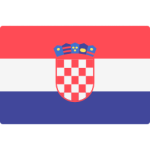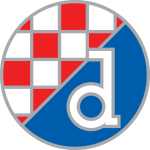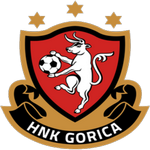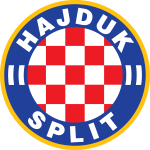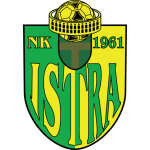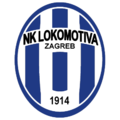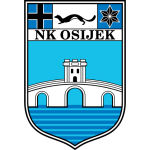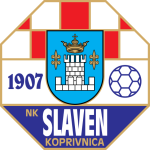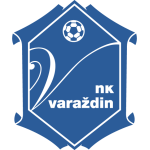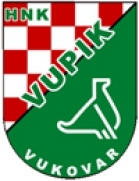Croatian Football Teams: Complete Guide to HNL, Prva NL, and Prva HNLŽ Teams (2025)
Like most European countries, football is significant in Croatia’s history. The Croatian football teams have produced some of the best players the world has witnessed, and they have a golden generation, which reached the World Cup final in 2018. Even though France ousted them in the game, they gave hope to young footballers in the country. With multiple wonderkids coming through the ranks, their vibrant and passionate fans create a sensational atmosphere in football games, as the country has a rich history in football.
In terms of league structure, the top league of Croatia is the Prva HNL (Hrvatska Nogometna Liga) or the SuperSport HNL. Like other European countries, Druga HNL (First Football League) is the second-tier league in Croatia. Different regional and grassroots leagues like Treća HNL and other lower regional leagues exist. These leagues enable the country to unearth local gems and nurture them into the next Luka Modrić or Davor Suker within these Croatian football clubs. Clubs like Dinamo Zagreb remain the strongest club in the league and regularly make the UEFA Champions League competitions. HNK Rijeka won the league last time, and the other Croatian football teams aim to stop the domination of Zagreb.
Croatian Football Clubs: History and Evolution of Football Teams in Croatia
The journey of the Croatian football teams from being under the Yugoslav influence to creating their own identity in the league speaks volumes about their effort. The country’s complex political conundrum dampened their hopes of having an independent professional league at the start. Initially introduced in the late 19th and early 20th centuries, football has been a part of Croatia since their inception. The first football game played in Croatia dates back to 1895 in Zagreb. Football became a prominent sport in most European countries during the Austro-Hungarian Empire.
However, after Croatia became a part of the Kingdom of Yugoslavia, the Croatian football teams participated in a Yugoslav league. Dinamo Zagreb and Hajduk Split became some of the clubs from Croatia to taste success and make them a force in the European game. After Yugoslavia started to break away into various countries, Croatia gained independence in 1991. They wasted no time setting up their top league in 1992, the Prva HNL (First Croatian Football League). Initially, they had 12 teams in the inaugural season, but now they are set with 10 Croatian football clubs in the league. The Croatia football league system follows the same rules as other European leagues.
Their real rise to success came in full flow at the 1998 FIFA World Cup, when they finished in third position. They have been perennial underdogs in most tournaments, but a 2018 final and a third-place finish in the 2022 World Cup signify their dominance. With an attitude to not die away in football games, even if you are on the losing end, Croatia blends its youth development and tactical intricacies to create a football team for the ages. They turned into the darkhorses in most major international tournaments, and the Croatian football teams excite the fans.
Croatian Football League System
Croatia’s football pyramid is a multi-tiered structure similar to the European leagues. The football teams in Croatia follow a relegation and promotion system, two critical factors in the European game, and the Croatia football league system follows a similar pattern. The SuperSport HNL remains on top of the football pyramid in Croatia, while other lower divisions across Croatia are identical to those in different European countries. The SuperSport HNL is the top league in Croatia, with 10 Croatian football teams.
Every team plays 36 matches in a quadruple round-robin format, which is unique in Croatia’s football pyramid system. Likewise, the champions qualify for the Champions League, while the bottom team gets relegated to the Prva NL. Meanwhile, the 9th-placed team enters the playoffs to stay in the first division.
The Prva NL is Croatia's second-division league, with 12 teams. The champions automatically get promoted to the SuperSport HNL, while the second-placed team fights for a chance in the first division by going against the ninth-place team in the playoffs. After these two divisions, Croatia's third division is the Druga NL. It follows the same relegation and promotion rules of the first two leagues. Regional and County Leagues come fourth in Croatia's football structure.
To develop youth players, the top football teams in Croatia have reserve teams in the lower leagues. Youngsters develop from teams like Dinamo Zagreb II, which plays in the reserve leagues. However, Croatian football teams can’t play in the same league as their parent club.
Croatian Football Pyramid
The basic understanding of a Croatian football pyramid is the structure of the country's football system, which includes promotion and relegation from one league to another. Unlike the USA, this system doesn’t depend on the franchise model but instills confidence, determination, and the will to win football games. In a typical setting, a top division, a secondary division, and other reserve leagues try to compete at the highest level.
The Croatian Football Federation oversees the Croatian football pyramid system, which was created to enable fair competition, long-term competitiveness, and the unearthing of young talent from the country. As discussed, the Croatian football structure has the SuperSport HNL, Prva NL, Druga NL, Treća NL, and County League.
The best team in the first division becomes champions, and teams in the second, third, and fourth divisions, according to their performances, gain promotion or relegation.
Most Successful Football Teams in Croatia:
Similar to other European leagues, Croatian football teams often win sensational victories in European Cup competitions. Dinamo Zagreb and Hajduk Split are two of the famous names in European football. Hence, we look at the top 10 successful clubs in Croatia.
| Club Name | Founding Year | No. of Trophies Won |
|---|---|---|
| Dinamo Zagreb | 1945 | 70+ |
| Hajduk Split | 1911 | 25+ |
| Rijeka | 1946 | 6 |
| NK Osijek | 1947 | 1 |
| Inter Zaprešić | 1929 | 1 (Croatian Cup) |
| NK Zagreb | 1908 | 1 (League title) |
| Lokomotiva Zagreb | 1914 | 0 (Runner-up finishes only) |
| Slaven Belupo | 1907 | 0 (Cup runners-up) |
| Varteks Varaždin | 1931 | 0 (Multiple Cup finals) |
| Cibalia Vinkovci | 1919 | 0 (Cup runners-up) |
HNL Teams (Hrvatska Nogometna Liga)
In Croatia's league, the HNL is Croatia’s top-tier men’s football league, and several top talents are on display. The league formerly known as 1. HNL was rebranded to SuperSport HNL in mid-2022. Only the first-tier carries the HNL abbreviation, while other lower tiers use NL. Clubs like Dinamo Zagreb and Hajduk Split carry the league's legacy as the famous HNL teams. Last year’s champions, HNK Rijeka, remain another upcoming threat in the SuperSport HNL league. Croatia’s top-tier football league was stitched together in 1992 after Croatia gained independence.
| Club | City | Founded | Home Stadium |
|---|---|---|---|
| Dinamo Zagreb | Zagreb | 1945 | Stadion Maksimir |
| Hajduk Split | Split | 1911 | Stadion Poljud |
| HNK Gorica | Velika Gorica | 2009 | ŠRC Velika Gorica |
| Istra 1961 | Pula | 1961 | Stadion Aldo Drosina |
| NK Lokomotiva | Zagreb | 1914 (as NK Lokomotiva) | Stadion Kranjčevićeva |
| NK Osijek | Osijek | 1947 | Opus Arena (Gradski vrt) |
| HNK Rijeka | Rijeka | 1946 | Stadion Rujevica |
| NK Slaven Belupo | Koprivnica | 1907 (as Slaven) | Stadion Ivan Kušek-Apaš |
| NK Varaždin | Varaždin | 1931 | Stadion Varteks |
| HNK Vukovar 1991 | Vukovar | 2012 | Stadion HNK Cibalia (in Vinkovci) |
Prva NL Teams (Prva Nogometna Liga)
Similar to the HNL teams, the Prva NL is Croatia's second-tier football league. Previously known as 2. HNL, the Prva NL champions, will gain promotion to the HNL, and the bottom teams will move to the third division. Here are the teams that contest against in the Prva NL.
| Club Name | City | Year Founded | Home Stadium |
|---|---|---|---|
| BSK Bijelo Brdo | Bijelo Brdo | - | Stadion BSK |
| HNK Cibalia | Vinkovci | - | Stadion Cibalia |
| Croatia Zmijavci | Zmijavci (Split area) | - | ŠRC Marijan Šuto Mrma |
| NK Dubrava Tim Kabel | Zagreb (Dubrava) | - | ŠRC Grana‑Klaka |
| NK Dugopolje | Dugopolje | - | Stadion Hrvatski vitezovi |
| HNK Hrvace | Hrvace | - | Gradski stadion |
| NK Jarun | Zagreb (Jarun) | - | Stadion Ivan Laljak‑Ivić |
| NK Karlovac 1919 | Karlovac | 1919 | Stadion Branko Čavlović‑Čavlek |
| NK Opatija | Opatija | - | Stadion Kantrida |
| HNK Orijent 1919 | Rijeka (Sušak) | 1919 | Stadion Krimeja |
| NK Rudeš | Zagreb (Rudeš) | - | Stadion SC Rudeš |
| NK Sesvete | Zagreb (Sesvete) | - | Stadion Sveti Josip Radnik |
Croatia Women's Football League Teams (Prva HNLŽ)
With women’s football evolving daily, the Croatia women’s football league continues to grow each season. Founded in 1992 and organized by the Croatian Football Federation (HNS), the Prva HNLŽ is Croatia's top-tier women’s football league. Teams like ŽNK Osijek and ŽNK Split possess talented players who fight against all the odds and play the beautiful game. There are eight clubs in the Prva HNLŽ, and they compete against each other for the Croatia women’s football league championship.
| Team Name | City | Year Founded | Home Stadium |
|---|---|---|---|
| ŽNK Osijek | Osijek | 1990 | Stadion Gradski vrt |
| ŽNK Dinamo Zagreb | Zagreb | 2016 (successor) | Stadion Maksimir (selected matches) |
| ŽNK Agram | Zagreb | 2000 | Zagreb-based (local pitches) |
| ŽNK Split | Split | 2009 | Stadion Park Mladeži |
| ŽNK Hajduk Split | Split | 2003 (as ŽNK Marjan) | Stadion Poljud (selected matches) |
| ŽNK Međimurje Čakovec | Čakovec | - | Local Čakovec stadium |
| ŽNK Gorica | Velika Gorica / Zagreb | - | Local GNK Gorica ground |
| ŽNK Neretva Metković | Metković | 2014 | Stadion Neretva (Metković) |


